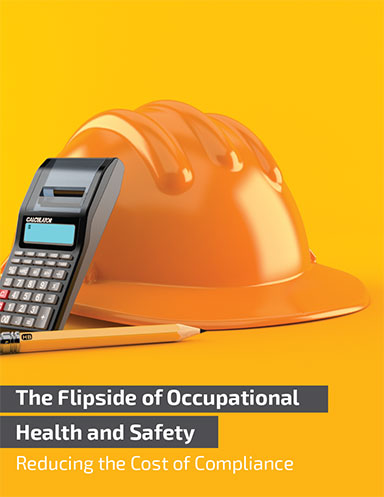Reducing the Cost of Compliance: The Flipside of Occupational Health and Safety
Increasing awareness among employers and organizations, along with the rising adoption of supporting technologies, has undeniably helped reduce the number of workplace incidents...however, increasingly stringent regulations and rising penalties have been one of the major driving forces in the evolution of occupational health and safety compliance globally.
The Second World War was the deadliest military conflict in the history of humanity. According to estimates, 3% of the world’s entire population had perished by 1940. The shi ft in power at the end of the war proved to be a crucible of global political tensions. The emergence of new political and economic alliances created innovative trade patterns. And global institutions like the United Nations (UN) and World Health Organization (WHO) were established to prevent a repetition of the atrocities that occurred during the war.
With the winds of change blowing strong in the wake of the war, occupational safety and health (OSH) was not le ft una ffected. The new international order had significantly a ected how organizations like the International Labour Organization (ILO) worked towards improving the working conditions and OSH on a global scale. Moreover, exponential growth in production of new materials and substances (such as poly vinyl chloride or PVC) in the mid-twentieth century spurred research on their possible harmful effects.
Despite the major changes in the workings of the ILO, the overall orientation towards OSH remained largely unchanged. Major industrial incidents such as Bhopal (1984) and Chernobyl (1986) continued to dominate news headlines...until recently.
On December 18, 2018 the Bureau of Labor Statistics released its National Census of Fatal Occupational Injuries. The report stated that the total number of fatal occupational injuries in 2017 stood at 5,147. By comparison, the same statistic for 2016 was 5,190 and the national average during the 1995-1999 period was 6,165.
This prominent reduction in workplace injuries and fatalities show that occupational health and safety in the United States has improved over the past couple of decades. Across the pond, in the United Kingdom, a similar trend is observed. According to a British government agency, Health and Safety Executive, the country has witnessed an 85% reduction in number of fatal injuries since 1974.
It’s not just the US and UK that have exhibited a decline in workplace fatality. It seems like a reigning trend across the globe. A study conducted by the Workplace Safety and Health Institute, Singapore estimating occupational accidents revealed a drop in fatality rates globally. In 1998, the fatality rate per 100,000 workers stood at 16.3. By 2014, the number had dropped to 11.3.
What’s Related




Favorites





